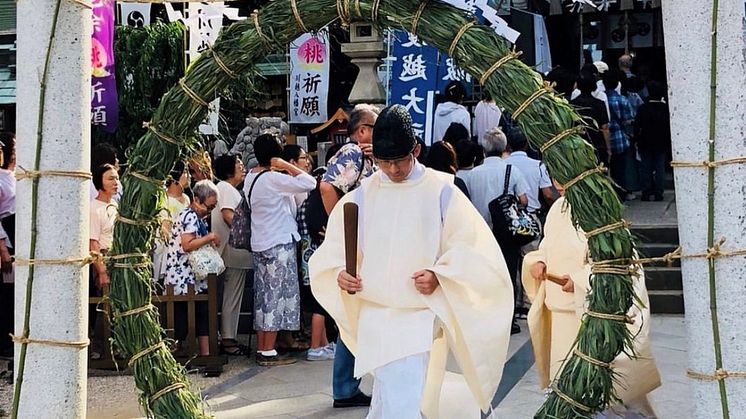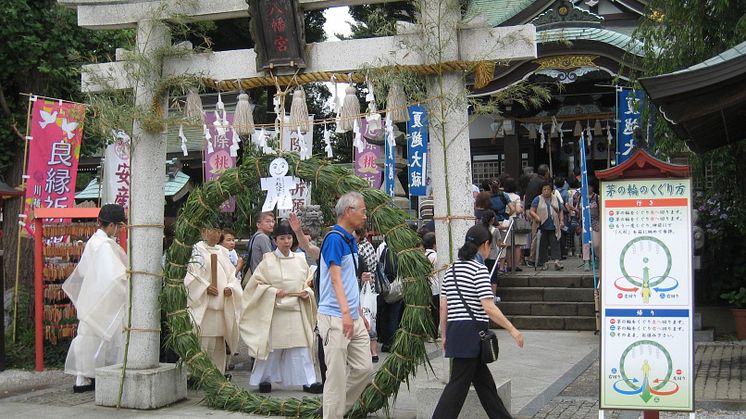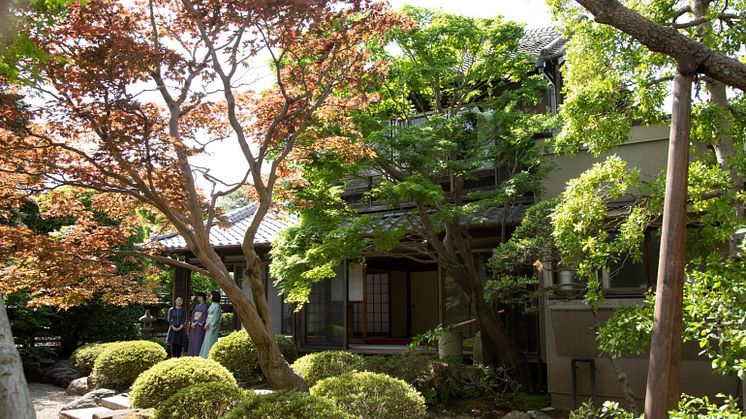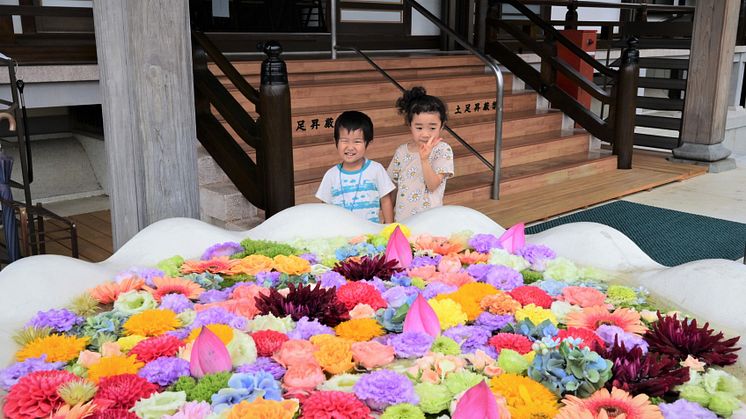
Press release -
Summer In The "Little Edo" Town Of Kawagoe

From June 30 – July 10, visitors to the lovely, "Little Edo" town of Kawagoe, in Saitama Prefecture, can experience Chinowa Kuguri. This Shinto ritual, held at Kawagoe Hachimangu Shrine, began in the early Edo Period with the intention of warding off plagues and promoting disease-free breathing. A perfect event for an era with Covid, the liturgy, also known as Nagoshi no Harae ("summer passing purification ceremony"), allows for personal illnesses and misery to be transferred to a Katashiro or alter image. Individuals write their names and ages on this paper doll image, which has been purified by the priests and then, in a figure-eight pattern, walk through a large ring (about 2 ½ meters diameter) called Chinowa (because it's made of Chigaya grass). Next, they proceed to the front of the main shrine and offer the Katashiro it to the deity, who will take care of medical and even emotional misfortunes by transferring the evil spirits from the New Year to the Katashiro for the next six months. The idea is to ensure a family's health through the difficult, hot summer by permitting the body and mind to be reborn in a new and clean manner.

150-Year-Old Garden and Historic Guesthouse Annex Add to the Authentic Experience

Even without this purification festival, Kawagoe is a splendid, convenient Tokyo daytrip. One compelling attraction is Tantoku Garden, established in 1869 by Tokujiro Suzuki (the first), a lumber merchant in Kawagoe. This distinctive Kare-sansui style garden depicts landscape scenery without water, utilizing rocks and sand, where each stone reveals the mindset of the garden's creator and plants echo the beauty of the four seasons.


For an added fee, visitors are also offered the chance to participate hands-on in a Japanese tea ceremony and traditional sweet, Wasanbon, making session. A Japanese, Italian or French lunch, served on the second floor overlooking the garden, can also be reserved for an additional charge.
Visitors can enhance their garden experience by adding an overnight stay in the private villa annex to the historic house on the property. The authentic guest annex, built in 1901, is praised for its extremely rare and expensive solid black central pillar, crafted from a single tree-trunk.
Beyond staying guests, the whole site - the garden and the two-story annex, is often rented hourly for weddings and other special occasions, even photo-shoots. As an enhanced experience, guests staying in the villas can soak themselves in the open-air bath. Built in the Meiji Era, the tubs gaze up at the rice store house or kura, which at night, illuminates in the moonlight.

Hanachozu, floating flowers in a pot are featured throughout Kawagaoe, including Tantoku Garden, Saimyoji Temple (https://insaitama.com/discrimination-free-saimyouji-in-kawagoe/) and Kawagoe Hachiman Shrine (https://kodawari-times.net/blog/hanachozu/). While the experience is traditional, they are a newly popular attraction since Covid, as a way to heal at temples and shrines, and a favorite of instagrammers.
Additional Kawagoe Summer Festival, In August
The 30th Kawagoe Fireworks will be lighting up the night sky on August, 20, 2022 for the first time in three years.
How to Reach Kawagoe
Kawagoe is just half-an-hour northwest from Tokyo's Ikebukuro Station (https://www.tobu.co.jp/en/service/station/7105.html), along the Tobu Tojo Line (https://en.wikipedia.org/wiki/T%C5%8Dbu_T%C5%8Dj%C5%8D_Line). There is also the Kawagoe Discount Pass Premium (https://www.tobu.co.jp/en/ticket/kawagoe/premium.html), which offers discounted train fares on the Tobu Tojo Line, complimentary bus rides within Kawagoe, and valuable benefits at cooperating shops and attractions in Kawagoe City.




